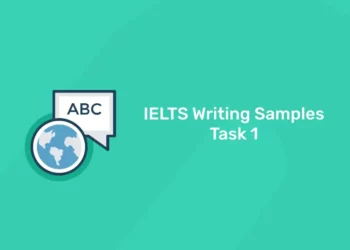Table of Contents
We’ve all heard of machine learning and artificial intelligence in the news these days, but if you don’t work in these fields, it can be difficult to understand what exactly they are and how they work. So how does machine learning work? How does it differ from data mining? And what are some practical applications of machine learning? All of these questions will be answered here in this article about machine learning! But first, let’s understand what machine learning really means. Artificial intelligence and machine learning have become buzzwords in recent years, but what do they really mean? For marketers, business professionals, and other professionals concerned with online applications, it’s important to understand these concepts in order to use them effectively and avoid misusing them entirely.
What Is Machine Learning Exactly?
Machine learning is a subfield of computer science that – if you’re going to get all technical about it – develops computer programs that can learn. The important part, though, is what those programs are learning. It’s a field of study that gives computers the ability to learn without being explicitly programmed, explains Anthony Goldbloom, CEO, and co-founder of Kaggle, an online community for data scientists. Using data, you train algorithms to recognize patterns in data. When they’re trained well enough (that is, after enough research), these algorithms can interpret information from real-world scenarios just like humans do: as patterns in familiar contexts. Machine learning has given computers human-like capabilities to perceive and react to their surroundings using less programming than ever before. How does machine learning work?: Let’s say you’ve got a bunch of photos on your phone. Some photos have trees in them, some have mountains, and some have your friends’ faces. You know exactly which ones are which because you’ve labeled them yourself by telling your phone this is a tree, this is my friend, or this mountain. Your phone doesn’t know what any of those things look like on its own; it needs to be told by someone who knows better than it does. That’s how we teach machines how to perform tasks too complex for them to handle alone.
Enroll in our latest machine learning course in the Entri app
The Process Of Data Analysis In Machine Learning
1: Which of the following algorithms is most suitable for classification tasks?
Data Analysis and Machine Learning are inextricably linked. Data Analysis is a prerequisite for Machine Learning. However, there is a difference between data analysis and machine learning. In Data Analysis, tools like Excel or R are used to analyze and interpret data in order to derive conclusions. On the other hand, Machine learning uses algorithms that learn patterns based on existing data sets and predict future events or outcomes based on these patterns. This can be done by processes such as Linear Regression, Logistic Regression, etc… Certain techniques like decision trees also fall under machine learning algorithms. A few examples of how these can be implemented are given below However, it should be noted that while Machine Learning requires Data Analysis, it does not require human intervention. For example: if you have a company that deals with thousands of transactions every day and you want to know whether your employees are showing up late for work more often than they should then you would need to use an algorithm (or set of algorithms) that could scan through all your previous employment records and then tell you whether they have been coming late or not. The algorithm would have to scan through each employee’s timesheet every day, compare their arrival times with their expected arrival times, and then give you an output telling you whether an employee has been coming late more often than he/she should.
Enroll in our latest machine learning course in the Entri app
The Benefits Of Using Machines To Make Decisions (A case study)
Business is complicated enough without having to make decisions yourself. This is one of many reasons why machine learning (ML) has become a particularly popular topic of discussion in recent years. A broad term for programs that allow machines to learn by themselves, ML enables algorithms to efficiently compile and analyze massive amounts of data—and based on those findings, make informed recommendations or predictions for how to act. That’s how Netflix recommends TV shows you’ll like, Amazon suggests products you might enjoy, and Google predicts which websites are relevant when you search. There are no hard and fast rules on what makes good ML; anything that gives computers a bit more autonomy is fair game. In fact, there are two main approaches: Supervised learning, where a computer system is trained using labeled data sets so it can make accurate predictions about new information. Supervised learning includes both classification and regression. Classification systems group similar items together while regression systems predict future outcomes. For example, an ML model could be used to classify email messages as spam or not spam based on certain characteristics (like word length). Then it could be used to predict which emails you would find most interesting if you were searching your inbox for something specific. Machine translation works along similar lines but instead translates words from one language into another using statistical analysis. Unsupervised learning, where computer systems identify patterns within unstructured data sets with little human input required.
Enroll in our latest coding course in the Entri app
Limitations
Machine learning is still in its early stages, so you won’t be able to control it very much. Machine learning has a lot of potentials, but right now it’s only been applied in certain areas: primarily computer vision and language processing. There’s a good chance machine learning will affect our lives more and more over time, but today machine learning is confined to specific use cases. This can make things confusing because we tend to mix up how machine learning works with how we actually use it. We know what Microsoft Word does, even though we have no idea how all of its programs work under the hood. Likewise, we can tell Google Translate what language to translate something into without knowing anything about how it does that translation behind closed doors. The same goes for machine learning—we don’t need to understand how everything works in order to take advantage of it. The question What is machine learning? makes sense at first glance, but there are many different ways to answer it depending on your perspective. If you want an answer that focuses on data and statistics, then read on! If you want an answer that focuses on applications or use cases instead, then check out some related posts below.











